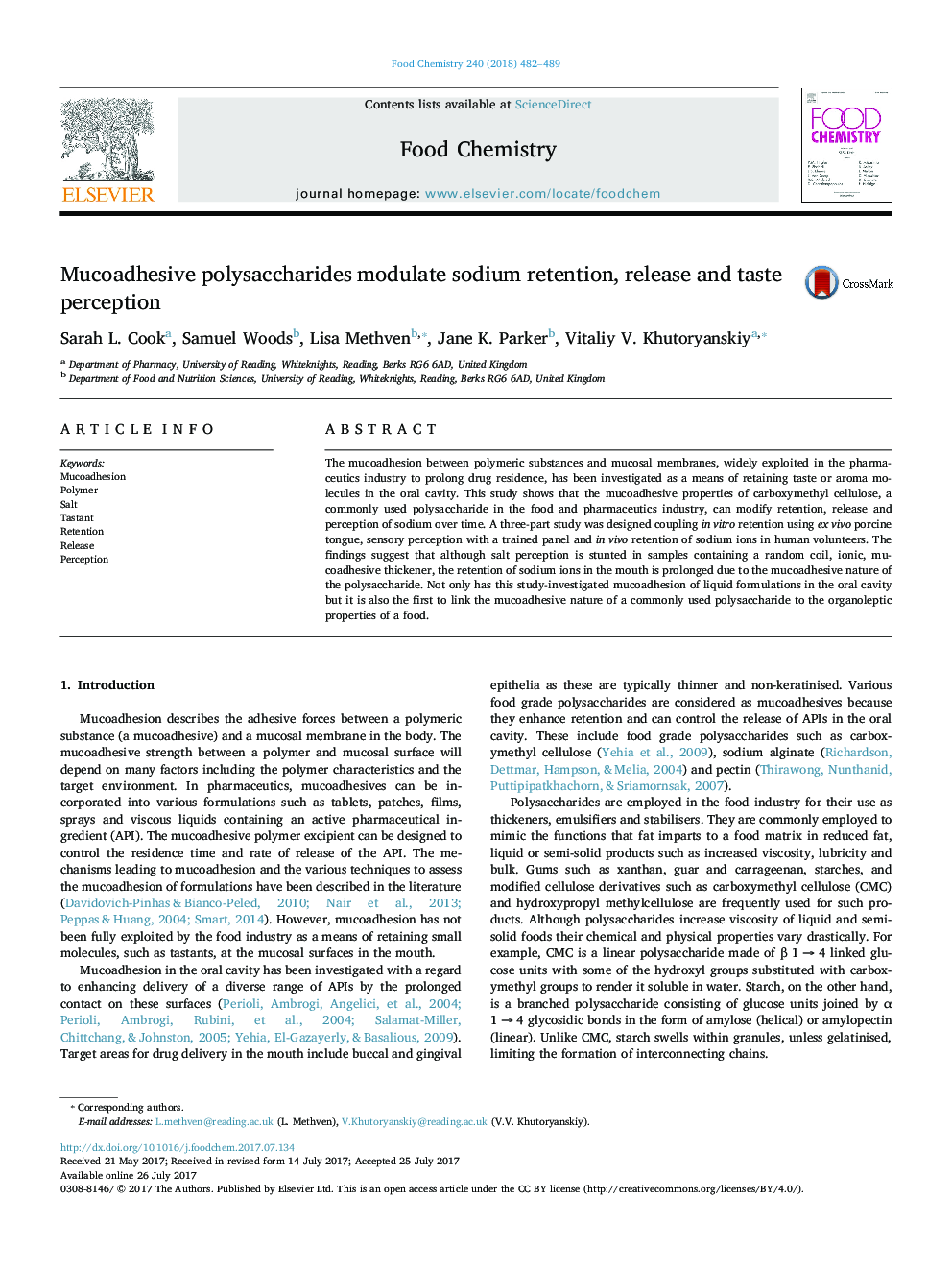| کد مقاله | کد نشریه | سال انتشار | مقاله انگلیسی | نسخه تمام متن |
|---|---|---|---|---|
| 5132486 | 1492052 | 2018 | 8 صفحه PDF | دانلود رایگان |

- A potential role for mucoadhesive polysaccharides in food products is investigated.
- Mucoadhesion of a well-known food grade polysaccharide was established.
- Sensory tests show the mucoadhesive reduces saltiness in solution.
- Despite this reduction in perceived saltiness, the mucoadhesive retains more sodium ions for longer.
The mucoadhesion between polymeric substances and mucosal membranes, widely exploited in the pharmaceutics industry to prolong drug residence, has been investigated as a means of retaining taste or aroma molecules in the oral cavity. This study shows that the mucoadhesive properties of carboxymethyl cellulose, a commonly used polysaccharide in the food and pharmaceutics industry, can modify retention, release and perception of sodium over time. A three-part study was designed coupling in vitro retention using ex vivo porcine tongue, sensory perception with a trained panel and in vivo retention of sodium ions in human volunteers. The findings suggest that although salt perception is stunted in samples containing a random coil, ionic, mucoadhesive thickener, the retention of sodium ions in the mouth is prolonged due to the mucoadhesive nature of the polysaccharide. Not only has this study-investigated mucoadhesion of liquid formulations in the oral cavity but it is also the first to link the mucoadhesive nature of a commonly used polysaccharide to the organoleptic properties of a food.
Journal: Food Chemistry - Volume 240, 1 February 2018, Pages 482-489